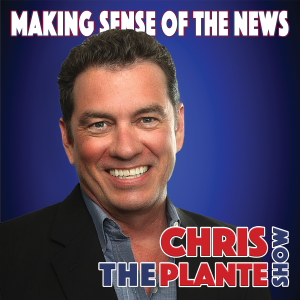
If the 19th century belonged to engineering, and the 20th century to chemistry and physics, then the 21st might belong to biology. (The OECD said as much in a 2012 forum.) Increasingly, we’re coming to understand the nature of humans as biological creatures, including the unconscious, “spooky” wiring that shapes our behavior more than we know or are perhaps comfortable with. We process 11 million bits of information every second, and 10 million of them are visual. We react to images much faster than we do text, and often we form emotional impressions before we consciously reverse-engineer a rational explanation for why it made us feel the way it did.
Insights like from cognitive science have made their way into nearly every discipline—including, very prominently, advertising and product design. The stunning rise of Apple is all about psychology. Car companies get it, too. There’s one big “but” there, though: one design field in which we’ve been remarkably slow to absorb the lessons of modern psychology. And that field is architecture.
The funny thing is, we used to incorporate those lessons into architecture and urban design. We just didn’t know we were doing it. But unconscious lessons, arrived at by trial-and-error, about what kinds of places make people comfortable and bring out the best in us are responsible for the pleasing harmony and coherence of the traditional urbanism you can find in pre-modern cities all over the world.
It's the reason traditional buildings so often evoke human faces in their proportions and door/window placement.
It’s the reason unfamiliar places can be navigable and familiar to us even when they’re foreign. It’s the reason Ann Sussman, on a visit to Copenhagen, thought:
“I don’t speak Danish. There’s no signage. Yet I know exactly where to go, and I feel more at home here than back home in Boston.”
Sussman is a co-author (with Katie Chen) of a controversial 2017 essay in Common Edge titled “The Mental Disorders That Gave Us Modern Architecture.” In it, Sussman and Chen examine the sharp contrast between post-World War I modernist architecture and traditional European architecture, through the lens of the psychology of two of Modernism’s pioneers: Walter Gropius and Le Corbusier.
Gropius, a World War I veteran, almost certainly suffered from post-traumatic stress disorder (PTSD), a diagnosis that would not be available until after his death in 1969. Le Corbusier was probably autistic—again, something that was not understood during his lifetime, but that we can retroactively see the hallmarks of. In both cases, Sussman says, these men seem to have been deeply uncomfortable with the kinds of traditional urban environments that pervaded the Europe they grew up in.
“Le Corbusier hated the Paris street,” for example, says Sussman; he found it overwhelming and overstimulating. Gropius actually designed some features of his Lincoln, Massachusetts house in ways that evoke a World War I bunker. The house has many of the hallmarks of modernist design: you can’t find the front door at a glance. The building stands aloof from the world around it instead of engaging passersby and drawing them in.
It would be simplistic to blame all of modernism on the mental quirks of two of its visionaries. But Sussman’s observations provide a fascinating springboard for understanding how traditional architecture is so effortlessly pro-social, and how much of that legacy we’ve tragically left behind in the 20th and 21st centuries—an aesthetic movement turbocharged by the policy decisions that led us to radically redesign much of our world around the automobile.
Listen to Chuck Marohn and Ann Sussman on the Strong Towns Podcast for a discussion of this shift and more, including:
- Why we're wired to perceive faces in building facades.
- What the ruins of Pompeii and 21st-century Disney World can each teach us about designing pro-social environments that inherently bring out the best in us.
- How the trauma of World War I gave way to the modernist movement in architecture.
- Why we should adopt a broader understanding of designing with human health in mind than just sidewalks and bike paths.
More Episodes
Pete Saunders
 2017-07-27
2017-07-27
 1.1k
1.1k
Don Kostelec
 2017-07-23
2017-07-23
 1.1k
1.1k
A Renaissance Zone in Bismarck
 2017-07-20
2017-07-20
 1.1k
1.1k
The Week Ahead: July 17, 2017
 2017-07-17
2017-07-17
 859
859
The Week Ahead, July 10, 2017
 2017-07-10
2017-07-10
 926
926
The Week Ahead, July 3, 2017
 2017-07-03
2017-07-03
 836
836
What's next for Strong Towns
 2017-06-23
2017-06-23
 857
857
Strong Towns Member Paul Fritz
 2017-06-21
2017-06-21
 837
837
Building a movement for change
 2017-06-19
2017-06-19
 837
837
Podcast: Tony Dutzik on the Auto Bubble
 2017-06-15
2017-06-15
 923
923
The Week Ahead: June 12, 2017
 2017-06-12
2017-06-12
 958
958
Solidarity Hall
 2017-06-08
2017-06-08
 919
919
The Week Ahead: June 5, 2017
 2017-06-05
2017-06-05
 828
828
Emily Hamilton
 2017-06-01
2017-06-01
 915
915
The Week Ahead: May 30, 2017
 2017-05-30
2017-05-30
 908
908
Vince Graham
 2017-05-25
2017-05-25
 895
895
The Week Ahead, May 22, 2017
 2017-05-22
2017-05-22
 833
833
An All-Night Citywide Art Festival
 2017-05-18
2017-05-18
 850
850
Pasqualina Azzarello
 2017-05-16
2017-05-16
 960
960
Richard Florida and the New Urban Crisis
 2017-05-11
2017-05-11
 1.1k
1.1k
Create your
podcast in
minutes
- Full-featured podcast site
- Unlimited storage and bandwidth
- Comprehensive podcast stats
- Distribute to Apple Podcasts, Spotify, and more
- Make money with your podcast
It is Free
You may also like

City Manager Unfiltered


Potencial Americano


The ASIC Podcast


The Chris Plante Show


Red Eye Radio

- Privacy Policy
- Cookie Policy
- Terms of Use
- Consent Preferences
- Copyright © 2015-2024 Podbean.com


 iOS
iOS Android
Android